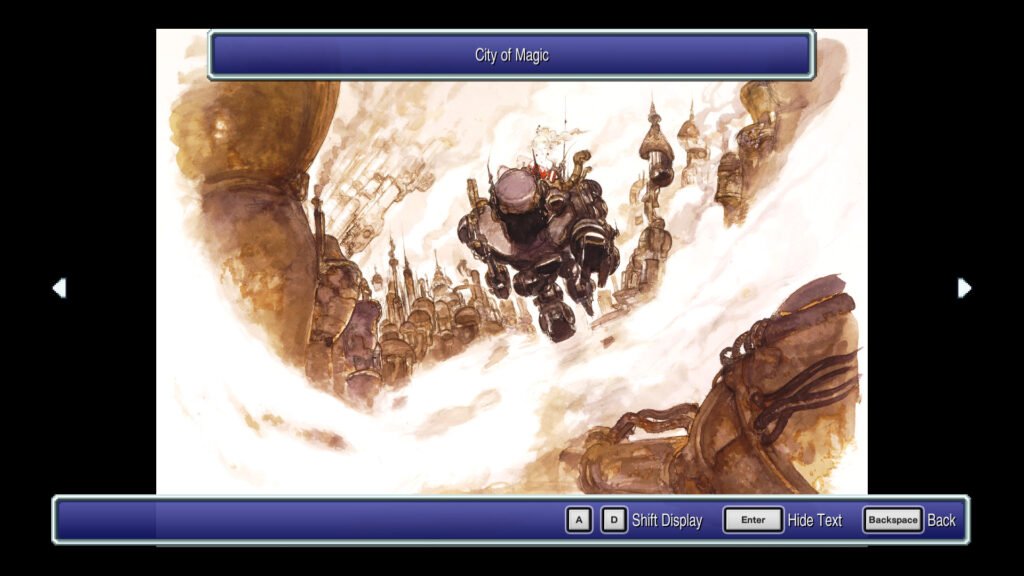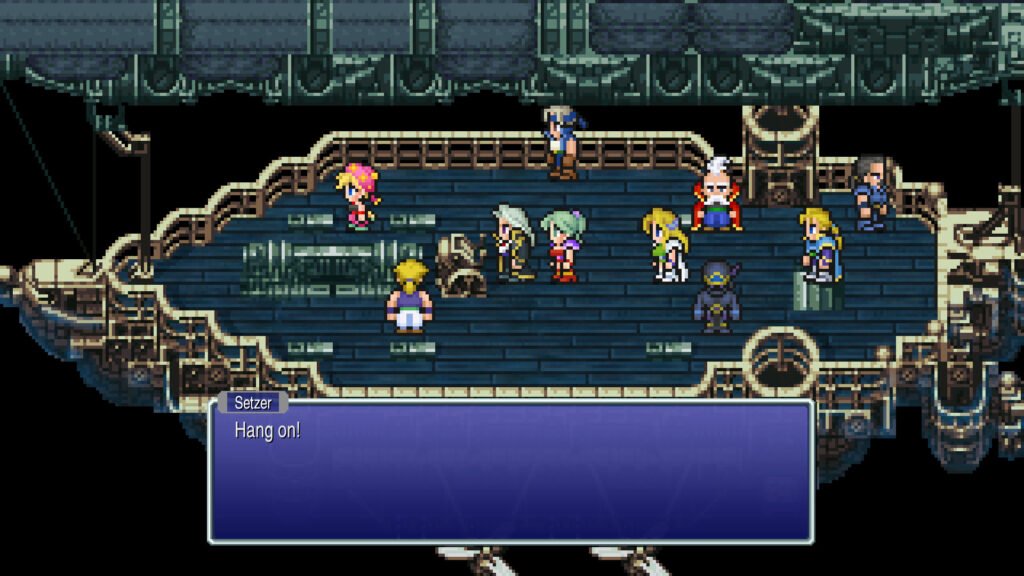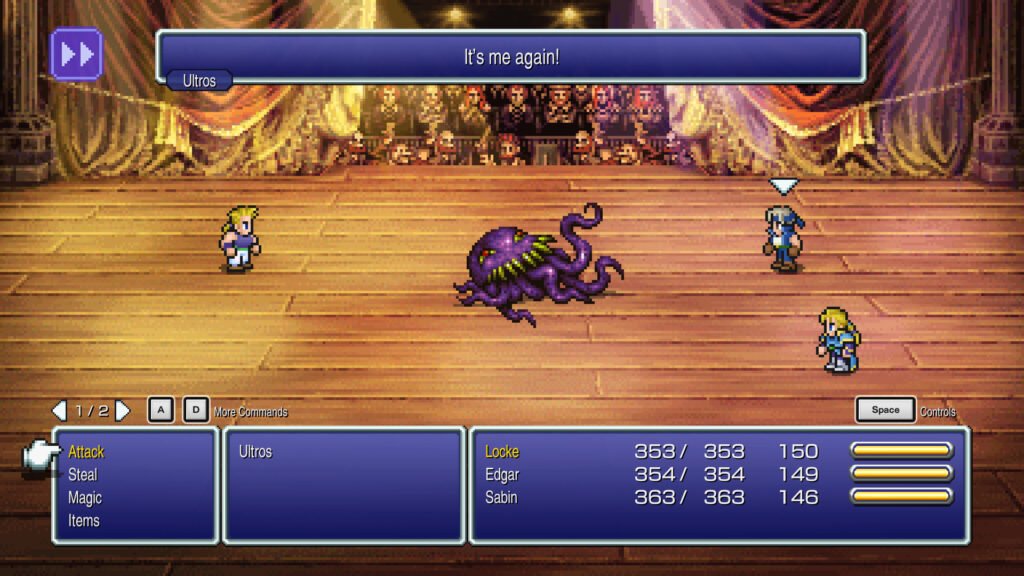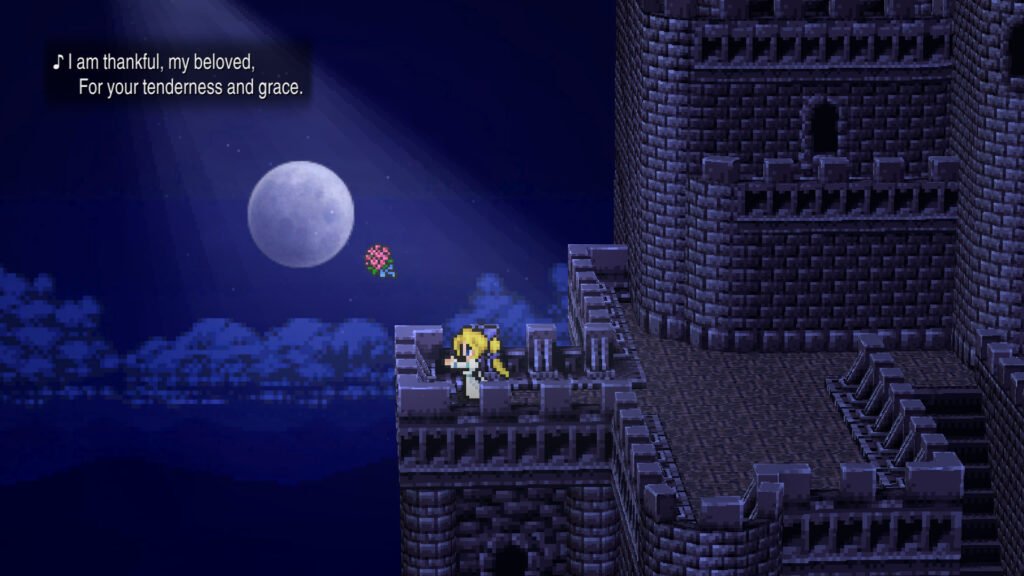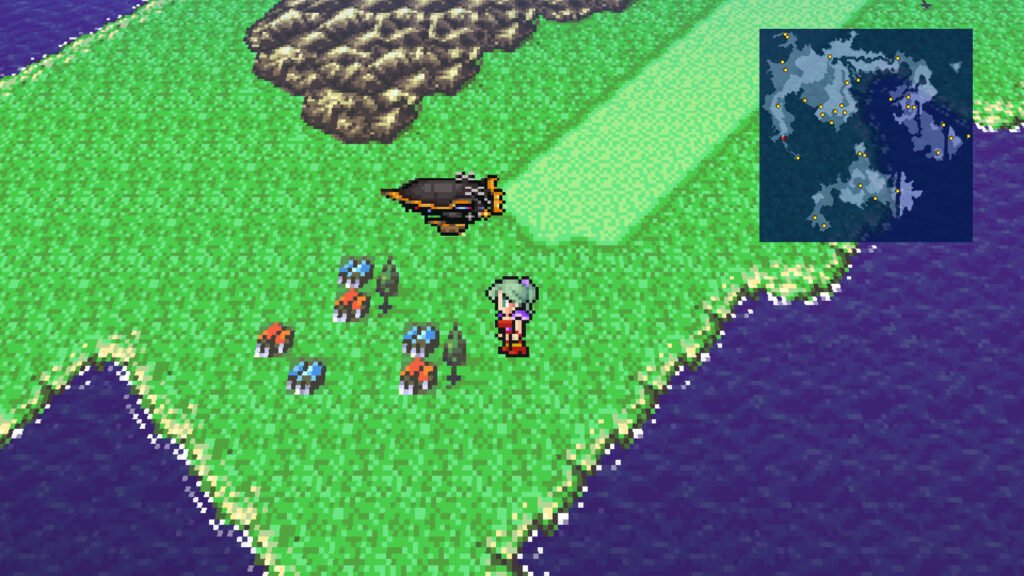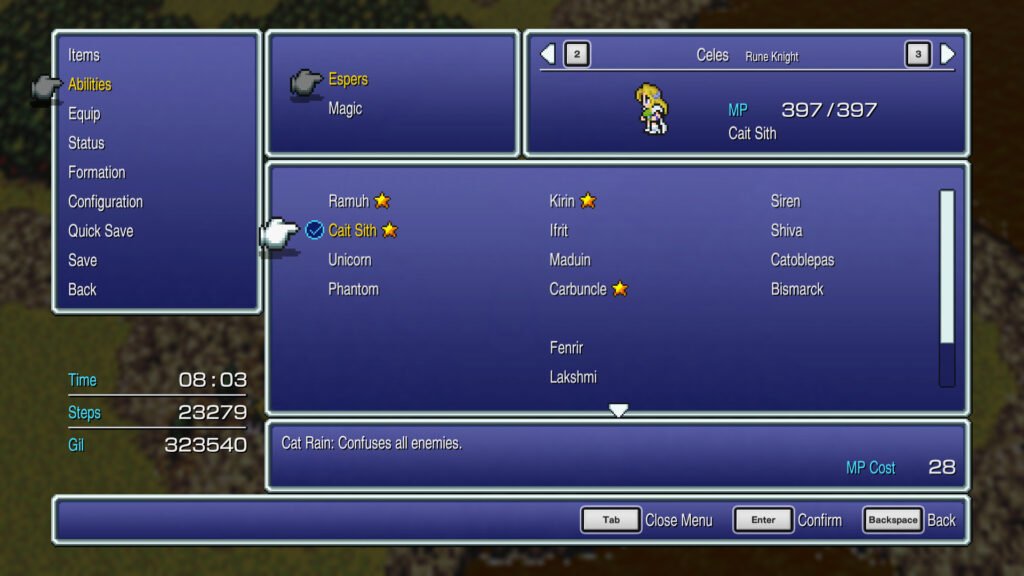Remember when I said it’s not always bad that you’re getting older – I want to retract that statement. It’s terrible, since everything aches! Oh, you came for the review of Final Fantasy VI? Alright, back to those then. When this title of Final Fantasy came out, I was still crawling around in diapers. As I mentioned in my previous review, I was thrilled about the remakes of these titles. I have tried picking them up so often but never got very far into them (< pre-Final Fantasy 7) since they have a high learning curve. Luckily, I’m getting older and more used to the JRPGs of the old. So let’s dive into the first of three reviews of the Final Fantasy IV till VI (I’m doing them all separately, if you want to read about the other three, check out the ones my colleague Michiel did right here). My Final Fantasy IV review and Final Fantasy V review can be found right here – but you’re here to check out Final Fantasy VI, so let’s Steampunk in.
Enter the Steampunk
Final Fantasy VI is a turning point for the series since it’s backing away from its strictly medieval fantasy settings featured in previous Final Fantasy titles. Instead, Final Fantasy VI is set in a world with prominent steampunk influences. The structure of society is similar to that of the latter half of the 19th century, with opera and the fine arts serving as recurring motifs throughout the game and a level of technology comparable to that of the Second Industrial Revolution. During the first half of the game, the planet is the World of Balance, divided into three lush continents. A series of mountain ranges punctuate the northern continent. The southern continent has been subjugated mainly by the cruel Gestahl Empire. The eastern continent is home to the Veldt, a massive wilderness inhabited by monsters worldwide. An apocalyptic event mid-game transforms the planet into the World of Ruin; its withering landmasses are fractured into numerous islands surrounding an enormous continent.
War of the Magi
The game alludes to a conflict known as the “War of the Magi,” which occurred one thousand years before the beginning of the game. In this conflict, three quarreling entities are known as the “Warring Triad” used innocent humans as soldiers by transforming them into enslaved magical beings called Espers. The Triad realized their wrongdoings; they freed the espers and sealed their powers inside three stone statues. As a precaution, the espers sealed off both the statues and themselves from the realm of humans as a result. The concept of magic gradually faded into myth as humankind built a society extolling science and technology. At the game’s opening, the Empire has taken advantage of the weakening barrier between the human and esper domains, capturing several espers. Using these espers as a power source, the Empire has created “Magitek,” a craft that combines magic with machinery (including mechanical infantry) and infuses humans with magical powers. The Empire is opposed by the Returners, a rebel organization seeking to free the subjugated lands.
Story of Final Fantasy VI
When booting up the game, we enter Narshe, a town in which Terra participates in an Imperial mission to seize a powerful Esper encased in ice. Upon locating it, a magical reaction occurs between Terra and the Esper; as a result, the soldiers accompanying Terra are killed, and Terra is knocked unconscious. Upon awakening, Terra is informed that the Empire had been using a device called a “slave crown” to control her actions. Terra cannot remember anything more than her name, and her rare ability to use magic unaided with the crown is now removed. Terra is then introduced to an organization known as the “Returners,” who she agrees to help in their revolution against the Empire. The Returners learn that Imperial soldiers, led by Kefka, are planning another attempt to seize the frozen Esper. After repelling Kefka’s attack, Terra experiences another magical reaction with the frozen Esper; she transforms into a creature resembling an Esper and flies to another continent. Upon locating Terra, the party is confronted by an Esper named Ramuh, who informs the group that Terra may require the assistance of another Esper imprisoned in the Imperial capital city of Vector. I will not spoil the rest of the story, but I wanted to give you more context before discussing the gameplay aspects.
Gameplay
Like previous Final Fantasy installments, Final Fantasy VI consists of four basic modes of gameplay: an overworld map, town and dungeon field maps, a battle screen, and a menu screen. The overworld map is a scaled-down version of the game’s fictional world, which the player uses to direct characters to various locations. As with most games in the series, the three primary means of travel across the overworld are by foot, Chocobo, and airship. With a few plot-driven exceptions, enemies are randomly encountered on field maps and the overworld when traveling by foot. The menu screen is where the player makes such decisions as which characters will be in the traveling party, which equipment they wield, the magic they learn, and the gameplay configuration. It is also used to track experience points and levels.
The game’s plot develops as the player progresses through towns and dungeons. Town citizens will offer helpful information, and some residents own item or equipment shops. Later in the game, visiting certain towns will activate side-quests. Dungeons appear in various areas, including caves, forests, and buildings. These dungeons often have treasure chests containing rare items not available in most stores. In addition, dungeons may feature puzzles and mazes, with some dungeons requiring the player to divide the characters into multiple parties who must work together to advance through the dungeon. It is an excellent addition to the gameplay element. It keeps the game fresh and exciting, showing a clear diversion from the older games (which is most significant in Final Fantasy VII).
Characters
Final Fantasy VI features fourteen permanent playable characters, most of any game in the main series, and several secondary characters who are only briefly controlled by the player. The starting character, Terra Branford, is a reserved half-human, a half-esper girl who spent most of her life as a slave to the Empire, thanks to a mind-controlling device, and is unfamiliar with love. Other primary characters include Locke Cole, a treasure hunter and rebel sympathizer with a powerful impulse to protect women; Celes Chere, a former general of the Empire who joined the Returners after being jailed for questioning imperial practices; Edgar Roni Figaro, a consummate womanizer and the king of Figaro, who claims allegiance to the Empire while secretly supplying aid to the Returners, and many more (but I’ll let you discover those yourself).
Most of the main characters in Final Fantasy VI hold a significant grudge against the Empire and, in particular, Kefka Palazzo, who serves as one of the game’s main antagonists and Emperor Gestahl. The clownish Kefka became the first experimental prototype of a line of magically empowered soldiers called Magitek Knights, rendering him insane; his actions throughout the game reflect his demented nature. The supporting character Ultros serves as a recurring villain and comic relief. A handful of characters have reappeared in later games. Final Fantasy SGI, a short tech demo produced for the Silicon Graphics Onyx workstation, featured polygon-based 3D renderings of Locke, Terra, and Shadow.
Espers
Aside from Terra and Celes, most characters learn magic abilities by equipping Espers, FFVI’s equivalent of summoning spells, to their person. Espers are acquired throughout the game and equipped one character at a time. Not only do you gain immediate access to a powerful summon by doing so, but you gradually learn magic spells like Cure, Fire, Haste, or the devastating Ultima by fighting and accruing ability points with specific Espers equipped. Once a character masters a spell, it remains in their repertoire even if you decide to remove the Esper and use another. Equipping various Espers to a character, learning their spells before moving to the next, and spending time level grinding can make for some potent party members later on with a veritable arsenal of magic at their disposal.
The addition of relics to FFVI adds another layer to the combat system. Characters can equip the conventional RPG weapons and armor, but relics are unique accessories that imbue practical support to a character. This includes boosting stats, lowering MP usage, constantly having a protective barrier, or granting immunity to adverse status effects. Certain relics even alter attacks, such as the Dragoon Boots that turn the standard attack command to Jump (which may have found their way onto Mog in my playthrough), or they allow you to attack or cast spells more than once. You can equip two relics per character, and they help provide further strategic customization to FFVI’s gameplay.
Visuals
Visually, the pixel remasters version of Final Fantasy VI is beautiful. The sprite work is detailed, colorful, and expressive. We all know what to expect from these Pixel Remasters by the sixth game: the default font is terrible, and the UI is identical to the earlier installments. Unlike the previous Pixel Remasters, however, FFVI even keeps some gorgeous character portraits in the status menu for party members. The game’s opening with Terra and the soldiers marching slowly towards Narshe over snow-covered terrain in Magitek armor is creditless, and some might think a bit on the slow side. Still, it is an aesthetic choice that can be very effective. Likewise, the revamped graphics of the infamous opera scene could also be seen as somewhat jarring, given how the rest of the remaster lacks those stylized adjustments. Still, it certainly adds a layer of haunting majesty to such a pivotal gameplay sequence. I love the attention to detail throughout the game’s imagery, as it helps breathe life into each moment. The pixel remaster also sports an art gallery featuring the game’s gorgeous concept art as a bonus.
Conclusion
So, to conclude! Final Fantasy VI lives up to its legacy and offers returning and new players a well-aged challenge (like a fine wine, but I don’t like wine). Like the other Final Fantasy titles I did, the remastered graphics look fantastic, and combined with the little touches in portraits, the attention to detail, and the musical score, we got a great game. The grind still is real but never gets too extensive since the pacing of Final Fantasy VI is even for a JRPG-sucker like me doable and probably the best of the six reworked titles. I enjoyed the new esper mechanic, and it felt like a great addition and upgrade from the other Final Fantasy titles. I’ll be playing a lot of Final Fantasy VI even after you finish reading this review. Since this is also the last of the Pixel Remasters, I want to thank you for sticking up with my rambling.

